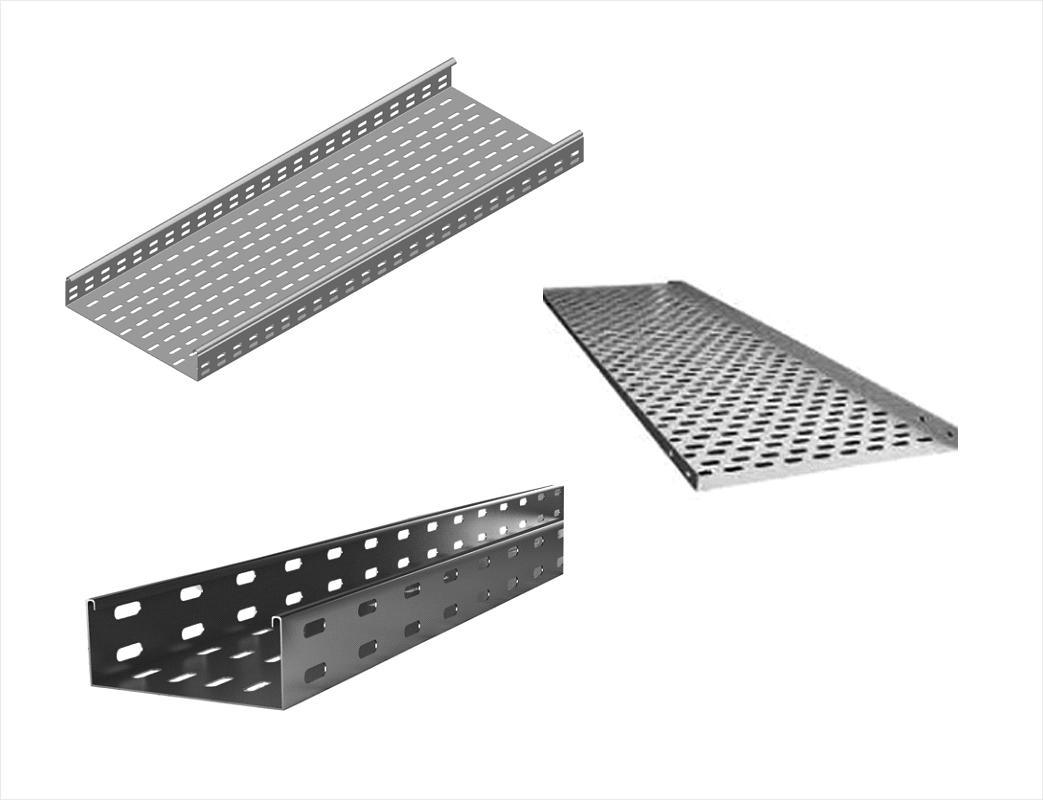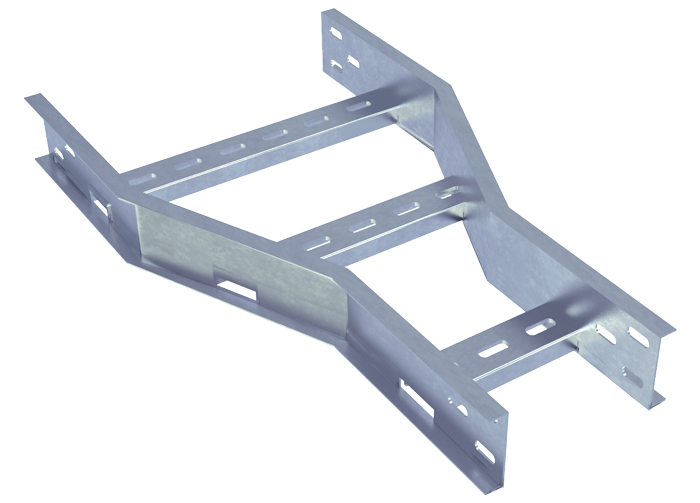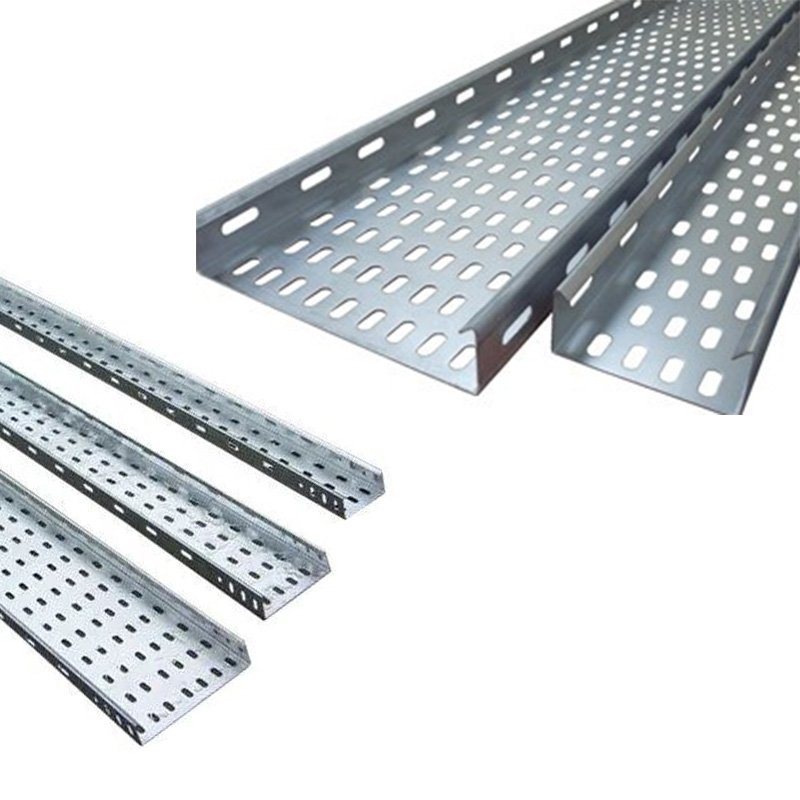Electrical cable trays are an essential component of modern infrastructure, providing a safe, efficient, and organized means of managing cables and wires in various settings. From industrial facilities and commercial buildings to residential complexes, cable trays play a crucial role in ensuring the smooth operation of electrical systems while maintaining safety standards. In this comprehensive guide, we will delve deeper into the key factors to consider when choosing and installing electrical cable trays, along with best practices, industry insights, and real-world examples.
1. Understanding Cable Tray Types and Materials
Electrical cable trays come in several types and materials, each with its unique features and advantages. The most common types include:
Ladder cable trays: These trays have an open design resembling a ladder, allowing for easy cable access, ventilation, and quick installation. Ladder trays are suitable for most environments and can accommodate a wide range of cable sizes, making them versatile and cost-effective.
Solid bottom cable trays: With a solid base, these trays provide additional support and protection for cables, particularly in harsh environments or applications where cables may be subject to damage or require extra insulation. Solid bottom trays also offer better cable retention and organization compared to open designs.
Wire mesh cable trays: Wire mesh trays offer excellent ventilation, flexibility, and adaptability. Their open structure allows for easy cable additions, removals, and reconfigurations, making them ideal for environments with frequent changes in cable layouts or high-temperature conditions.

When it comes to materials, electrical cable trays are typically made from:
Steel: Steel cable trays are durable, cost-effective, and suitable for most environments. They can be galvanized, powder-coated, or painted for added corrosion resistance and aesthetic appeal. Steel trays are available in different grades, including mild steel, carbon steel, and stainless steel.
Aluminum: Lightweight and resistant to corrosion, aluminum cable trays are ideal for installations where weight is a concern or in corrosive environments such as chemical plants or marine applications. Aluminum trays also offer good thermal conductivity, which can help dissipate heat generated by cables.
Stainless steel: Stainless steel cable trays offer superior corrosion resistance and are commonly used in food processing, pharmaceutical, and marine industries due to their hygienic properties and ability to withstand harsh chemicals and cleaning agents.
PVC (Polyvinyl Chloride): PVC cable trays are non-conductive, lightweight, and resistant to chemicals, making them suitable for environments where electrical insulation is critical, such as hospitals, data centers, or clean rooms. PVC trays are also fire-retardant and have low smoke emission properties.
2. Assessing Cable Tray Load Capacity and Size Requirements
To ensure the proper functioning and safety of your cable tray system, it’s essential to choose trays with sufficient load capacity to accommodate the weight of your cables and any additional accessories. Factors that influence load capacity include:
Tray material: Different materials have varying strength-to-weight ratios, affecting their load-bearing capabilities. Steel and stainless steel trays generally have higher load capacities than aluminum or PVC trays.
Tray design: Ladder trays generally have higher load capacities than solid bottom or wire mesh trays due to their open structure and reduced material usage.
Cable fill percentage: Cable trays have maximum recommended fill percentages to prevent overcrowding and ensure proper airflow. Overfilling a tray can lead to reduced cable life, increased heat buildup, and potential safety hazards such as electrical shorts or fires. Follow NEC guidelines or manufacturer recommendations for appropriate fill percentages based on cable size and type.
To determine the appropriate tray size, consider the number and size of cables you need to install, as well as any future expansion plans. It’s also important to factor in the required bend radius for your cables to prevent damage during installation and ensure optimal cable performance.
3. Complying with Electrical Codes and Standards
When selecting and installing electrical cable trays, it’s crucial to adhere to relevant electrical codes and standards, such as the National Electric Code (NEC) in the United States or IEC standards internationally. Key considerations include:
Proper grounding and bonding: Ensure that your cable tray system is properly grounded and bonded according to NEC requirements to protect against electrical faults and reduce the risk of fire or equipment damage. Use appropriate grounding straps, jumpers, or bonding conductors to create a continuous and low-impedance path for fault currents.
Cable tray spacing and support: Follow NEC guidelines for minimum tray spacing and support intervals to maintain structural integrity and prevent sagging or collapse. Support brackets should be securely attached to building structures or independently installed supports, and the tray should be level and aligned throughout the installation.
Cable tray routing and accessibility: Plan your cable tray layout to avoid obstacles, maintain adequate clearance from combustible materials, and provide easy access for maintenance and inspections. Consider factors such as cable tray elevation, tray transitions, and tray penetrations through walls or floors.
Fire-rated cable trays: In certain environments or applications, fire-rated cable trays may be required to slow down the spread of flames and limit the release of toxic gases in case of a fire. Choose cable trays with appropriate fire-resistant coatings or materials, and follow local building codes and regulations for installation.

4. Installation Techniques and Best Practices
Proper installation techniques are vital for the longevity and safety of your electrical cable tray system. Some key best practices include:
Using appropriate mounting hardware: Choose the right type and size of screws, bolts, or other fasteners to securely attach cable trays to walls, ceilings, or supports. Ensure that the mounting hardware is compatible with the tray material and meets the required load-bearing specifications.
Ensuring proper alignment and leveling: Accurately position cable trays to maintain consistent elevation and minimize stress on cables and connections. Use laser levels or plumb bobs to check tray alignment and adjust supports as needed.
Protecting cables during installation: Use cable supports, ties, or saddles to secure cables within the tray and prevent damage or chafing. Follow manufacturer recommendations or industry best practices for cable separation, bundling, and strain relief.
Labeling and documenting the cable tray system: Clearly label cables and document the tray layout to facilitate troubleshooting, maintenance, and future upgrades. Use standardized labeling systems, such as the Electronic Industries Alliance (EIA) 568-B standard, to ensure consistency and clarity.
Minimizing electromagnetic interference (EMI): In sensitive environments or applications, consider using shielded cable trays or EMI-compliant cable management solutions to reduce the risk of signal interference or data corruption.
Accommodating cable growth and expansion: Plan your cable tray system to allow for easy addition, removal, or reconfiguration of cables as your facility or infrastructure evolves. Incorporate modular or adjustable tray components, and enough space for future cable runs.
Real-world example: In a large manufacturing facility, engineers designed a cable tray system that incorporated ladder trays for general-purpose wiring and solid bottom trays for high-voltage power cables. The team carefully calculated cable fill percentages, adhered to NEC guidelines for spacing and support, and used fire-rated cable trays in areas with increased fire risks. The installation process involved precise alignment, proper cable support, and clear labeling, resulting in a safe, organized, and easily maintainable cable management solution.
5. Maintenance and Inspections
Regular maintenance and inspections are essential to ensure the continued performance and safety of your electrical cable tray system. Key maintenance tasks include:
Cleaning and debris removal: Periodically clean cable trays to remove dust, dirt, and other contaminants that can impede airflow, contribute to overheating, or cause premature cable degradation. Use appropriate cleaning methods and tools that do not damage the tray or cables.
Inspecting cables and connections: Check cables for signs of wear, damage, or corrosion, and verify that connections are secure and free from loose or frayed wires. Replace or repair damaged cables promptly to prevent system failures or safety hazards.
Assessing tray integrity: Examine cable trays for signs of rust, cracks, or other structural issues that could compromise their load-bearing capacity or safety. Repair or replace damaged trays as needed, and reinforce supports if necessary.
Updating documentation: Update cable tray layouts, cable labels, and inspection records as needed to reflect changes or additions to the system. Maintain accurate and up-to-date information to facilitate maintenance, repairs, and compliance audits.
Training and education: Provide training and education to facility personnel on proper cable tray installation, maintenance, and safety procedures. Ensure that workers understand the importance of adhering to codes, standards, and best practices to minimize risks and optimize system performance.

Real-world example: A data center implemented a rigorous cable tray maintenance program to ensure the reliability and security of their electrical infrastructure. The program included regular visual inspections, scheduled cleaning and debris removal, and periodic testing of grounding and bonding connections. The data center also provided ongoing training for technicians and updated documentation whenever changes were made to the cable tray system. As a result, the facility experienced fewer cable-related incidents, improved energy efficiency, and enhanced overall system performance.
By following these guidelines and best practices, you can confidently choose and install electrical cable trays that meet your specific needs, comply with industry standards, and promote a safe and efficient electrical infrastructure. Investing in high-quality cable trays, diligent maintenance, and ongoing education will ultimately help safeguard your facility, equipment, and personnel while optimizing your operational efficiency and reducing downtime. This ultimate guide serves as a comprehensive resource to guide you through the process of selecting and installing electrical cable trays, ensuring that your project is a success and your electrical systems operate smoothly and safely.

